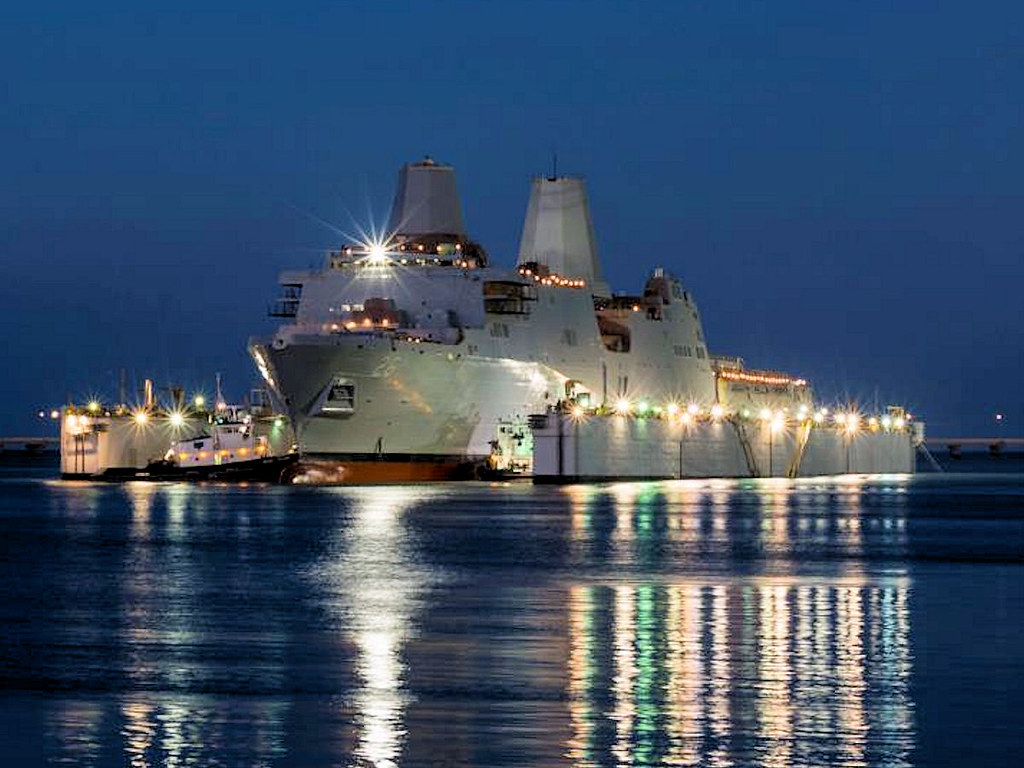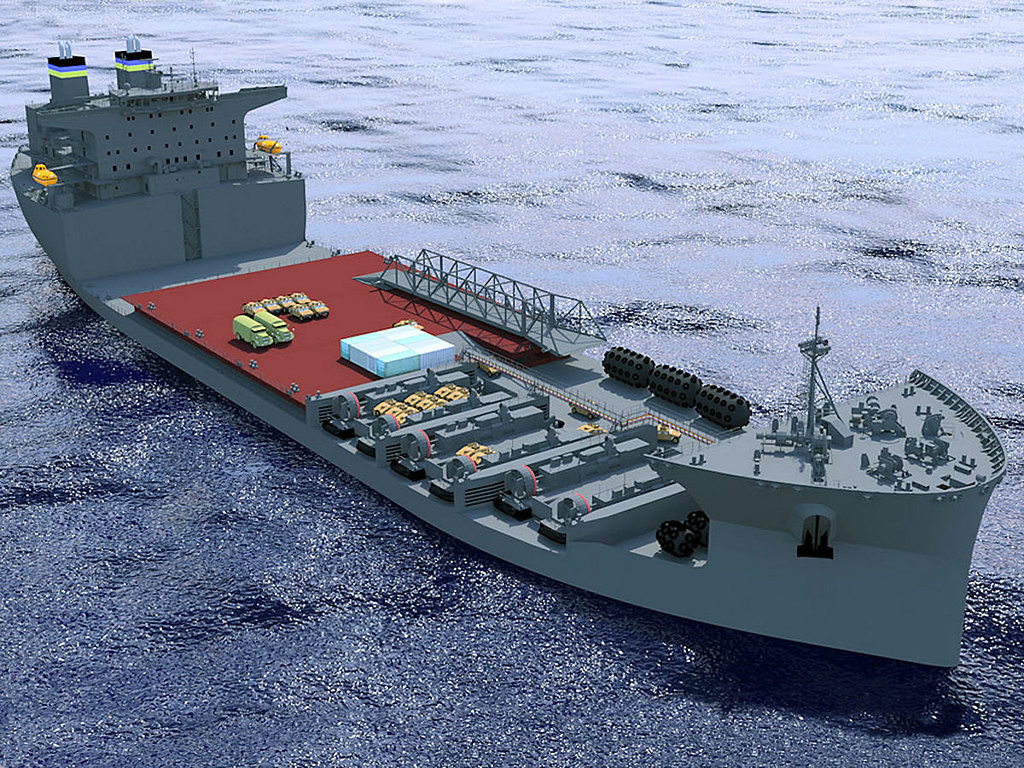I thought I would add this information to this thread as well.
Here's a picutre of the new USNS Lewis Puller, T-MLP-3/T-AFSB-1, after its launch.
Let's talk about what the US Navy is doing here.
The US Navy has been building new Amphibious/Air Assault support and staging vessels for the last few years, while also continuing to construct the Sna Natonion Class LPDs and the America Class LHAs. These new vessels are a part of the US Navy's strategic initiative that calls for Forward-from-the-Sea approach to logistics and support of Amphibious and Air Assault.
The idea is to allow for vessels, which are not built to the same expensive full combat standards as the traditional large LHDs and LHAs, or LPDs and LSTs, to support the operations of the Amphibious/Air Assault fleet by providing for Mobile Loading Platfroms and Afloat Forward Staging Bases. This allows basing of material at sea and tranfer of that material from even larger vessels to the Ampohibious Assault vessel well out to sea away from the actual combat operations.
Such vessels can also serve to conduct training exercises and operations, and non combat vulnerable operations, as well as providing the at-sea basing for material for the full combat vessels to use for provisioning, resupply, etc.
This has resulted in two variants of Mobile Landing Platforms to be built.
The first is the Mobile Landing Platform, or MLP, of which two have already been built.
USNS Montford Point, T-MLP
- Launched in March 2013
USNS John Glenn, T-MLP-2
- Launched in September 2013
An Afloat Forward Staging Base (AFSB) variant has also been constructed. The first was recently launched. The newly launched vessel is the:
USNS Lewis Puller T-AFSB-1
- Launched in November 2014
A second T-AFSB vessel is also planned and budgeted.
Here are concept pictures showing the differences:
The Standard MLP Concept
The AFSB Concept
Both variants displace over 60,000 tons and are 785 feet long with a beam of 165 feet. Their standard draft is just under 40 feet. However, both variants can use special ballasting systems to lower themselves in the water.
The standard Mobile Landing Platfrom (MLP) is designed to accomodate three Landing Craft Air Cushion (LCAC) vessels in special docking lanes where material, equipment, vehicles (including armor) and men can be off loaded onto the LCAC for transport to the larger vessels. Special ramps are also provided with a special system to allow RORO operations from loarger RORO vessels and directly to the combat vessels when necessary, while underway at sea.
The Afloat Forward Staginbg Base (AFSB) vairant of the MLP has a large hanger and flight deck built over the equipment and material staging area. This allows these vessels to utilize helicopters up to the CH-53E Sea Stallion size to move troops and equipment from bases and larger vessels, to the AFSB, and then on to the combat Amphibious/Air Assault ships. The hanger can accomodate up to two of the large helicopters or threre medium sized helicopters. These vessels do not have the docking lanes for the LCACs but they do have the ramp facilities for onloading and offloadgin equipment, vehicles and personnel while underway at sea.
It is also enviosined that the AFBS version of the vessel will serve as a mother ship for anti-mine warfare operations. It would provide two MH-53 Sea Dragoin anti-mine warfare helcipoptrs to be based on the vessel and special holders for up to four anti-mine sleds to be stored, serviced, and operated. These vessles in the counter-mine mission would also be able to provision and support several smaller mine-warfare vessels, like the Independence Class Littoral Combat Ship (LCS) or the Avenger Cass anit-mine warfare vessels.
I have a
which includes high-resolution pictures of the various MPL vessels, including the new Lewis Puller AFSB variant. It also includes a concept picture of each.
Here are pictures of the standard MLP conducting recent, at-sea trials of the LCAC docking and at-sea loading from a USNS RORO
This is really good stuff.






